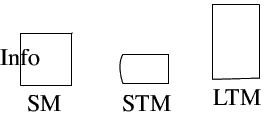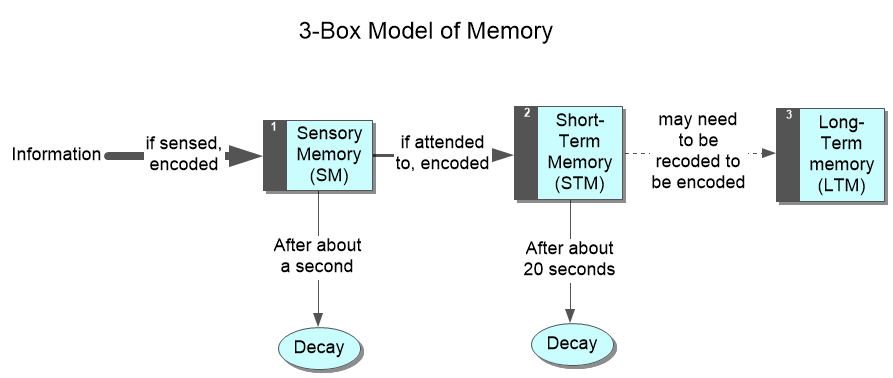
You don't have just one memory. Instead, you have at least 3.
As you can see from the diagram below, before information can get into your permanent memory (the third box, labeled "Long-Term Memory"), it must get through two other boxes: the Sensory Memory (SM) box and the Short-Term Memory (STM) box. Put another way, before information can get into permanent memory, it (like Indiana Jones) must pass 3 challenges--each of which is more difficult than the last.

Take home lesson: If you want to improve your memory for names or school material, you should figure out which memory is letting you down. Often, people will blame their long-term memory when the information never got to long-term memory. For example, many "memory problems" are really attention problems (i.e., inattention prevented information from getting into short-term memory, which then means the information couldn't get into long-term memory). So, to identify why you are not remembering something, not only do you have to determine whether the problem is at encoding, storage, or retrieval (as discussed in the previous take home lesson), but you also have to determine which memory box is the problem because encoding, storage, and retrieval are different for each box. To see how encoding is different for each box, watch this 22-second animation.
Terminology note: Synonyms for "memory" include "register" and
"store."
So, you may hear sensory memory referred to as "sensory register" or
as "sensory store."
Similarly, you may hear short-term memory referred to as
"short-term register" or "short-term store."
Guess what two
other terms you may hear for long-term memory (LTM)?
Back to Memory's 3 Key Terms/Processes
Copyright 2020-2025 Mark L. Mitchell